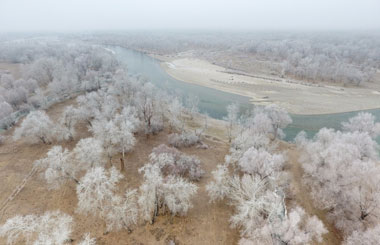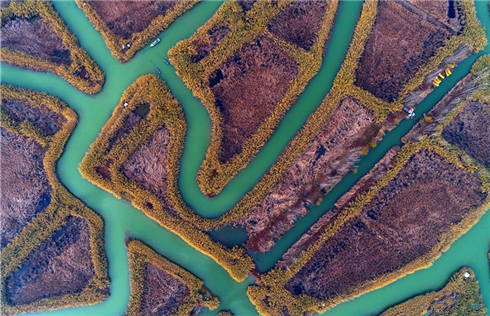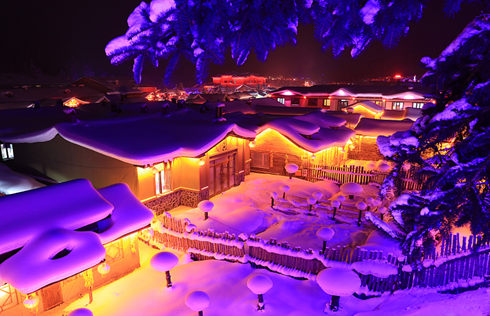Taking a trek to discover the wild gems of Borneo
|
The Proboscis Monkey, known for the adult males' long noses, is one of Borneo's most endangered creatures. Tuweimei |
An island paradise, populated with the world's largest flower, long-nosed monkeys and crocodiles, prepares itself for broadband. Daniel Robinson of New York Times reports.
A snow-white fortress in the style of the English Renaissance, garnished with crenellations, pepper pot turrets and an octagonal keep, is not quite what you'd expect to find on a steamy bluff overlooking an equatorial river in Malaysian Borneo. But Fort Margherita, built in 1879 by Charles Brooke, the second White Rajah of Sarawak, is just one of the many charms of Kuching, a gracious and kaleidoscopically diverse city of about 600,000 just an hour and a half by air from Singapore.
An amble through its safe, eminently walkable streets will reveal dragon-festooned Chinese temples a few blocks from a 19th-century South Indian mosque; fortresses from the time of the White Rajahs (English rulers of the Kingdom of Sarawak from 1841 to 1941) a short walk from a high-rise district of hotels and icily air-conditioned shopping malls; and chic restaurants that would not be out of place in London a few streets away from open-air stalls redolent with half-a-dozen Asian cuisines.
The most extraordinary attractions in the Kuching area, however, are natural. Drive an hour or two out of town and you come to tracts of some of the most ancient and species-rich rain forests on earth. In less than a week, you can plunge into an exotic world of primeval flora and endangered fauna, visit - or live with - a local tribe, and still have time for urban pursuits - i.e. eating and shopping. In addition, many Sarawakians converse comfortably in English, making travel a breeze.
I first discovered the sundry delights of Kuching, which is the capital of the Malaysian state of Sarawak (pronounced sah-RAH-wok) several years ago. My soon-to-be wife, Rachel, was living in Singapore and we decided to escape it for a few days and explore some of Malaysia's other half. In less than a day I was entranced and decided to return at some point - with a notepad.
When I went with Rachel, we stayed in the center of town, but for this visit I chose a guesthouse a bit off the beaten path. Kuching has several international-standard business hotels, but this place came with a good recommendation, and the fact that the co-owner of the Fairview Guesthouse, Eric Yap, a retired civil servant, offered to show me around was a bonus, especially since many of the places I wanted to go are not accessible by public transport. My game plan was to head to nearby national parks in the morning and explore the city later in the day.
I took time to explore the city the way it should be, on foot and aimlessly. For a first-time visitor, most of the highlights - temples, mosques, Chinatown, several excellent museums, and restaurants - are within a short walk of Kuching's Waterfront Promenade, a 0.8-km-long ribbon of flower beds, tropical trees and food stalls that is especially refreshing whenever a cooling breeze blows off the Sarawak River.
"A Rafflesia is flowering!"
It was with this exclamation that Eric's wife greeted me one afternoon as I was pondering my next move. Because this bulletin - the local equivalent of a hot tip for the afternoon horse race - was both unexpected and time-sensitive, it made the decision easy.
Texas-size Borneo is home to some of the most extraordinary plants on earth and one of the rarest is the elusive Rafflesia, the world's largest flower, some of whose species can produce blooms nearly one meter in diameter. Because Rafflesia flowers last for just a few days before rotting, we quickly made plans to leave the next morning.
After a 70-km, two-hour drive northwestward, we arrived at Sarawak's best place for Rafflesia spotting, Gunung Gading National Park, a 26-square-km patch of old-growth rain forest overlooking the South China Sea.
The Rafflesia plant is a rootless, stemless, leafless parasite that consists almost entirely of the flower. It attaches itself to vines of the Tetrastigma plant, a member of the grape family, from which the Rafflesia's filament-like tentacles suck prodigious quantities of nutrients.
A few hundred meters into the forest, our guide turned off the plank walk and we followed him across a rocky hillside. Suddenly, there it was, nestled at the base of two moss-flecked boulders: an orange-red Rafflesia tuan-mudae 0.76 meter in diameter, its five meaty petals mottled with warty raised spots. The basketball-size diaphragm in the center, speckled with white spots on the inside, enclosed a disk resembling a spiky lotus flower.
I bent down and put my nose practically inside the flower's core. Though the odor was hardly overpowering, you wouldn't want to eat a chicken cutlet that had smelled like a Rafflesia before it was cooked.
As I neared the end of my stay, there was still something I had yet to see: a wild troupe of one of Borneo's most endangered - and oddest - primates, the proboscis monkey. It was in search of this peculiar creature, endemic to Borneo, that I spent my final evening in Sarawak cruising through Kuching Wetlands National Park, whose pristine mangrove forests are accessible only by boat (easy enough to arrange through your guesthouse or hotel).
In the company of an Italian couple from Turin, Eric and I drove 24 km north to the seaside village of Kampung Santubong and boarded an open motorboat. Along the shore - the tide was very low - mangrove roots poked out of the mud like thousands of fat, knobby pencils stuck in vertically, eraser-first.
Our affable guide and boatman, Sarbini bin Labong, slowed the outboard to a purr, pointing toward the shore at what he said was a monkey. All I saw were swaying branches. Then I heard the crashing of tree limbs and caught sight of a flash of reddish-brown fur - a potbellied proboscis monkey jumping from one tree to the next in search of choice young leaves. Grunts and chirps emerged from what we soon realized was a troupe of about 10 of the agile creatures. True to their name, the adult males cast an unmistakable profile thanks to their pendulous noses.
When darkness had fully fallen, we began hunting for Sarawak's most feared creature, the man-eating saltwater crocodile, which can grow to a length of 6 meters or more (it is considered to be the world's largest living reptile). We chugged into a narrow channel and Sarbini again cut the motor, rowing as he shine a flashlight toward the muddy shore. Little splashes emerged from the blackness as unseen fish broke the surface.
Suddenly we saw a gleam - reptilian eyes reflecting the boatman's beam. Silently, we approached and spotted a snout and two greedy eyes just above the water line. As we drew near, the critter moved and, for the first time, we could make out its true dimensions. It was a baby - no more than 0.6 meter long; he (or she) would have been able to drown and devour a Barbie doll but that's about it. Without stretching the truth (as long as we were vague on the details), we could now report to the folks back home that we had encountered a hungry crocodile in the wild and lived to tell the tale.
|
A flowering Rafflesia is one of Borneo's natural wonders. Tuweimei |
(China Daily 02/02/2011 page10)
















